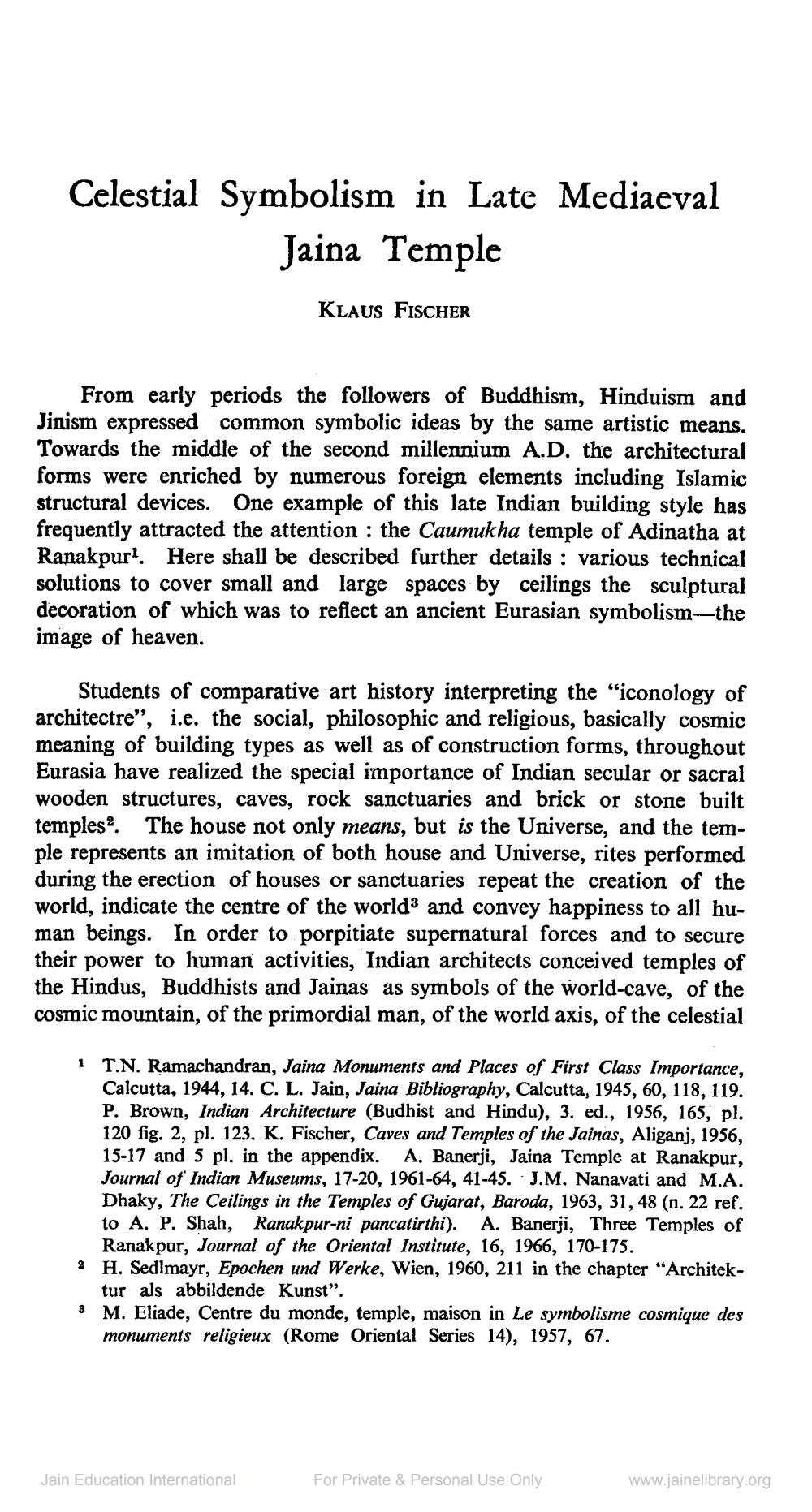________________
Celestial Symbolism in Late Mediaeval
Jaina Temple
KLAUS FISCHER
From early periods the followers of Buddhism, Hinduism and Jinism expressed common symbolic ideas by the same artistic means. Towards the middle of the second millennium A.D. the architectural forms were enriched by numerous foreign elements including Islamic structural devices. One example of this late Indian building style has frequently attracted the attention : the Caumukha temple of Adinatha at Ranakpurl. Here shall be described further details : various technical solutions to cover small and large spaces by ceilings the sculptural decoration of which was to reflect an ancient Eurasian symbolism—the image of heaven.
Students of comparative art history interpreting the "iconology of architectre”, i.e. the social, philosophic and religious, basically cosmic meaning of building types as well as of construction forms, throughout Eurasia have realized the special importance of Indian secular or sacral wooden structures, caves, rock sanctuaries and brick or stone built temples. The house not only means, but is the Universe, and the temple represents an imitation of both house and Universe, rites performed during the erection of houses or sanctuaries repeat the creation of the world, indicate the centre of the world and convey happiness to all human beings. In order to porpitiate supernatural forces and to secure their power to human activities, Indian architects conceived temples of the Hindus, Buddhists and Jainas as symbols of the world-cave, of the cosmic mountain, of the primordial man, of the world axis, of the celestial
1 T.N. Ramachandran, Jaina Monuments and Places of First Class Importance,
Calcutta, 1944, 14. C. L. Jain, Jaina Bibliography, Calcutta, 1945, 60, 118, 119. P. Brown, Indian Architecture (Budhist and Hindu), 3. ed., 1956, 165, pl. 120 fig. 2, pl. 123. K. Fischer, Caves and Temples of the Jainas, Aliganj, 1956, 15-17 and 5 pl. in the appendix. A. Banerji, Jaina Temple at Ranakpur, Journal of Indian Museums, 17-20, 1961-64, 41-45. J.M. Nanavati and M.A. Dhaky, The Ceilings in the Temples of Gujarat, Baroda, 1963, 31, 48 (n. 22 ref. to A. P. Shah, Ranakpur-ni pancatirthi). A. Banerji, Three Temples of
Ranakpur, Journal of the Oriental Institute, 16, 1966, 170-175. 2 H. Sedlmayr, Epochen und Werke, Wien, 1960, 211 in the chapter "Architek
tur als abbildende Kunst". 3 M. Eliade, Centre du monde, temple, maison in Le symbolisme cosmique des
monuments religieux (Rome Oriental Series 14), 1957, 67.
Jain Education International
For Private & Personal Use Only
www.jainelibrary.org




